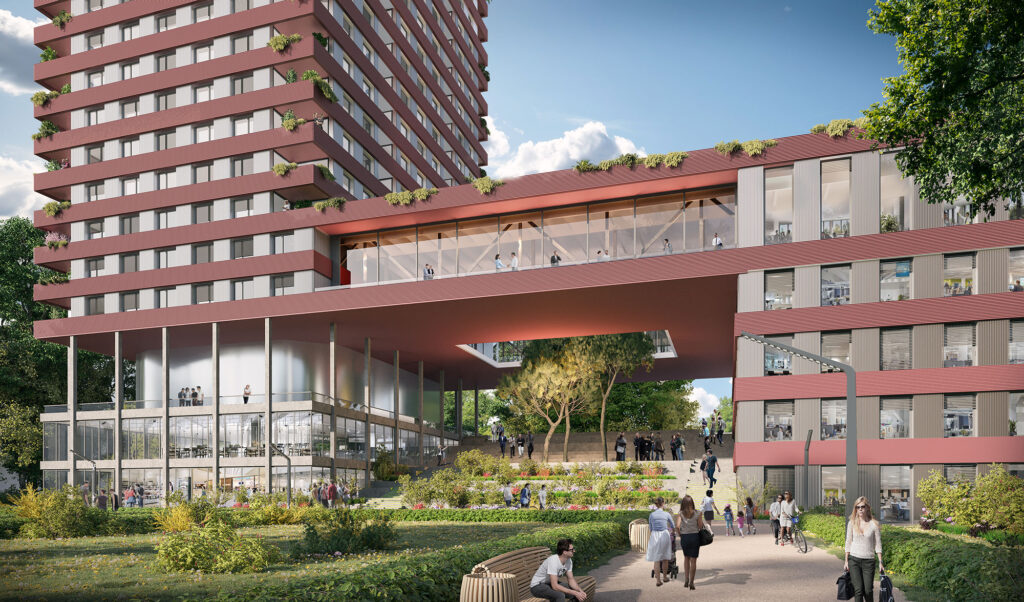With the acceleration of global warming, the time has come to protect the environment. In parallel with the ecological transition, companies are looking for ways to reduce their greenhouse gas emissions.
Given that 25% of greenhouse gas emissions in the developed world come from the real estate sector, we urgently need to find ways of putting the brakes on this race. 3D modeling and digitization are innovative solutions that are particularly easy to implement.
In fact, they play a key role in making real estate sustainable, responsible and environmentally friendly. Find out in this article how 3D modeling contributes to sustainable development objectives.
3D real estate modeling for sustainable project presentation
The world of real estate has seen a great advance in technological tools. 3D modeling makes it possible to visualize a project digitally for prospective customers or investors.
Accessible via social networks or a website, this 100% online solution reduces the waste (paper, cardboard, plastic) associated with designing physical models. What's more, 3D modeling enhances every aspect of a sustainable project.
In fact, your 3D perspective highlights the various ecological or sustainable aspects of your real estate program. For example, wind or solar farms can be shown on photorealistic images to highlight these elements.
For public presentations, you can use 3D perspectives to explain how the structure or form of housing you've chosen helps reduce energy consumption.
It's also a good way of informing local communities about the precautions taken by your company to protect their immediate environment.
It's a great way to explain the sustainability of your real estate program.
A real estate project more respectful of its location with a 3D model

With a view to sustainable development, 3D modeling helps to create a project in harmony with its environment. To this end, it provides architects and urban planners with a comprehensive tool for visualizing the project's impact in the chosen location.
In fact, every program brings its share of changes to the entire site: topography, vegetation, waterways.
So, using 3D modeling, you can understand how the program will modify the landscape, but also the relief elements. In particular, this will enable you to make decisions to modify certain aspects of the project if it is likely to have significant negative impacts on the site.
Moreover, presenting a visual of the project's location in the local community facilitates the work of local authorities. They will be able to study the technical files with supporting visuals. Thanks to a quicker, more detailed understanding, the authorities will be able to issue their authorizations in less time.
3D modeling for a more eco-responsible approach to real estate
3D modeling contributes to sustainable development by offering solutions for controlling costs, while ensuring the sustainability of the project. In fact, thanks to BIM technologies, it is possible to carry out several simulations on your program.
Together with your entire team, you can simulate how your choice of materials can reduce your impact on the environment. Thanks to powerful simulation tools, you can quickly visualize the cost-efficiency ratio of the materials you choose.
With a comparative cost analysis, you'll have different scenarios at your disposal to help you decide on the direction and planning of your project.
It is also possible to reduce the quantity of materials, when the simulation shows that a lightweight yet durable structure is possible. These simulations can also be used to select materials that perform better in the face of local environmental conditions.
This is why modeling often takes into account the importance of natural resources.
3D modeling and optimization of natural resources
Thanks to 3D modeling, you can better optimize resources, reduce construction costs and, above all, reduce the energy consumption of your program.
In fact, by modeling the building's orientation in relation to natural resources, you can understand their impact on the project. Indeed, the choice of orientation allows you to make the most of the sun's rays, which will reduce the need for artificial lighting and heating.
This can result in a significant reduction in energy bills.
Similarly, simulation of wind flows enables designers to orientate the building in such a way as to offer natural ventilation to future building owners.
To reduce water consumption, it is also possible to simulate rainwater runoff patterns. This enables the design of sustainable water management systems: rainwater harvesting, retention basins, etc.
It's even possible to create green roofs and walls based on this water runoff data.
3D modeling for efficient real estate design and planning

For some property developments, unexpected events can delay construction for days or even weeks. Yet every week of delay contributes to the emission of more carbon dioxide and the consumption of more resources.
As a result, the slow pace of real estate projects can be detrimental to the local community. That's why rigorous planning is so important. 3D modelling can help eliminate some of the unexpected by simulating detailed data, from the quantity of materials required to the structure of the building.
Scanning with a 3D scanner can detect any imperfections or defects in the project. These upstream checks provide essential information for better project planning and the correction of any errors.
These digital checks will also be much less costly, as they don't require the expenditure of additional materials and manpower.
3D modeling is therefore a real asset for any developer wishing to integrate sustainable development objectives into the design process. Above all, it's a way of maximizing the value of your projects during the pre-sales and sales phases.
Add value to your sustainable projects with our 3D models








